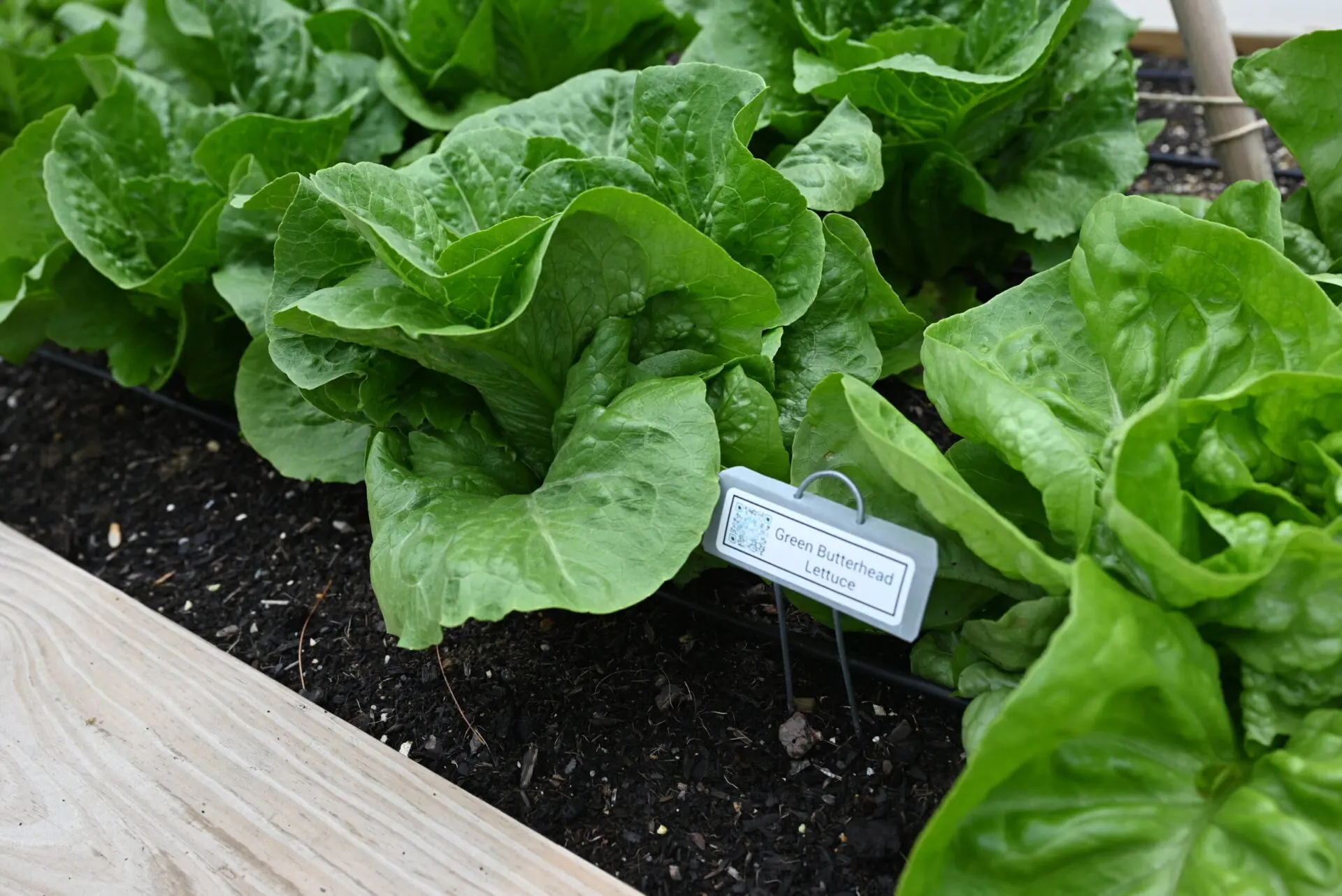Get The Most Out of Your Head Lettuce from Backyard Eats
Harvesting Head Lettuce
When It’s Ready
- In the early stages, you may cut off individual leaves (e.g. for a sandwich)
- Harvest the full head of lettuce whenever it is filled out, or when the leaves from nearby lettuces push up against each other
- May – June
When It’s Too Late
- When plants have gone to flower (aka bolted), which makes them bitter and unpalatable
- You can tell a lettuce is bolting when it starts to grow upward, taking the shape of a cone
- Harvest ASAP if you see this happening
How To
- Cut the entire head free by slicing along the soil line with a sharp knife
Pro Tip
- Harvest in the early morning when the lettuce is most crisp, before it starts to wilt from the heat of the day
Growing Head Lettuce
Head lettuce has a mild and slightly sweet flavor, with a crisp and crunchy texture. Head lettuce is typically used as a salad ingredient, and can be eaten raw or cooked. It can be torn or chopped into bite-sized pieces and used as the base for a salad, or used as a wrap for sandwiches or burgers. It can also be grilled, roasted, or sautéed to add a unique and flavorful touch to a range of dishes. Head lettuce pairs well with a variety of other ingredients, including fruits, nuts, and cheeses.
Varieties of Head Lettuce:
Green Butterhead Lettuce | Green Summer Crisp Lettuce | Red Butterhead Lettuce | Red Summer Crisp Lettuce | Romaine Lettuce
Storing Head Lettuce
Post-Harvest Care: Cool and rinse immediately after harvest by dunking into cold water. Leave on a towel to dry.
Fresh Storage: Place in airtight bags or containers and refrigerate. Lasts up to 2 weeks when stored fresh from the garden.
Long-Term Storage: Do not freeze lettuce.

Cooking With Head Lettuce
- Classic Garden Salad: Tear or chop head lettuce into bite-sized pieces and combine with other salad vegetables like tomatoes, cucumbers, and carrots. Toss with your favorite dressing and enjoy a refreshing and crisp salad.
- Lettuce Wraps: Use large lettuce leaves, such as iceberg or butter lettuce, as a wrapper for fillings like grilled chicken, tofu, or seasoned ground meat. Add your choice of vegetables, sauces, and toppings for a light and flavorful wrap.
- Caesar Salad: Toss torn romaine lettuce leaves with Caesar dressing, grated Parmesan cheese, and croutons. Add grilled chicken or shrimp for a more substantial meal. This classic salad is a crowd-pleaser.
- Lettuce Cups: Use lettuce leaves, such as Boston lettuce or green leaf lettuce, as cups to hold fillings like chicken or tuna salad, stir-fried vegetables, or even taco fillings. The lettuce cups provide a refreshing and low-carb alternative to traditional wraps or tortillas.
- Grilled Lettuce: Brush lettuce halves or wedges with olive oil, season with salt and pepper, and grill until lightly charred and wilted. Drizzle with a vinaigrette or a squeeze of lemon juice for a smoky and unique twist on salad.




